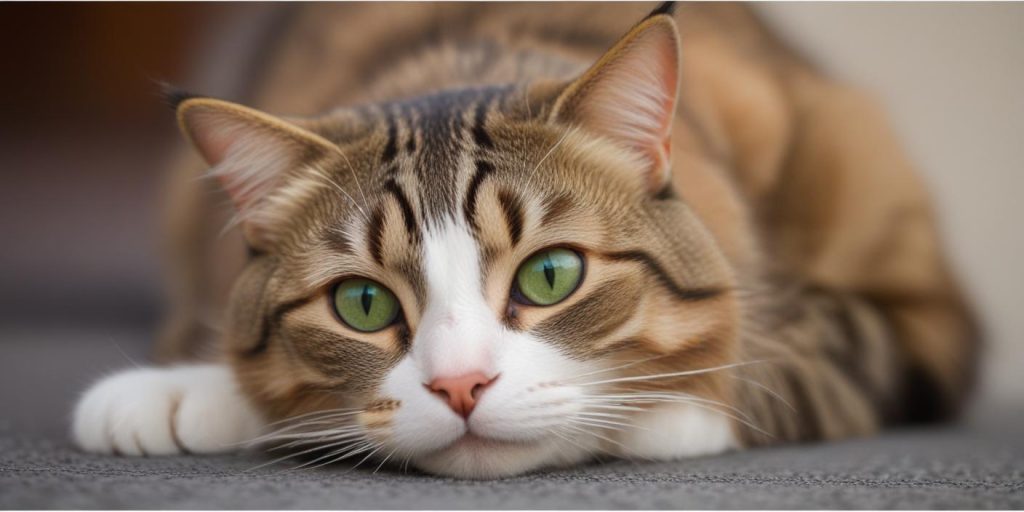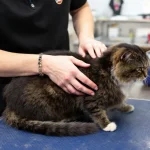ChatGPT
Feline incontinence, where a cat leaks urine unintentionally, can be concerning for both the cat and the owner. This issue often signals an underlying medical or behavioral problem. Here are the most common causes and what you can do to help:
1. Urinary Tract Infections (UTIs)
UTIs are a frequent cause of incontinence in cats, especially older cats or those with underlying conditions. Bacteria can irritate the bladder, making it difficult for your cat to control its urination.
Symptoms: Frequent urination, blood in urine, straining, or crying in the litter box.
What to Do: Visit a vet promptly for antibiotics and treatment.
2. Bladder Stones or Crystals
Mineral buildup in the urinary system can lead to blockages, irritation, or even complete inability to urinate in severe cases. This can cause leaking as the bladder overflows.
Symptoms: Straining, licking the genital area, painful urination, or a swollen abdomen.
What to Do: Seek veterinary care immediately, as blockages can be life-threatening.
3. Weak Bladder Sphincter (Age-Related)
Older cats may experience a weakening of the bladder sphincter muscle, which can result in involuntary leakage.
Symptoms: Dribbling urine when resting or sleeping.
What to Do: Discuss options with your vet, such as medications to strengthen the sphincter.
4. Neurological Disorders
Conditions affecting the spinal cord or nerves (e.g., injury, degenerative diseases) can interfere with bladder control.
Symptoms: Difficulty walking, dragging hind legs, or changes in behavior.
What to Do: Your vet may recommend diagnostic imaging (e.g., X-rays, MRI) to identify the issue.
5. Stress or Anxiety
Emotional stress can disrupt a cat’s normal urination habits, leading to inappropriate urination or leakage. Common stressors include changes in the home, new pets, or loud noises.
Symptoms: Urinating outside the litter box, over-grooming, or hiding.
What to Do: Minimize stress, provide a calming environment, and consider feline pheromone products like Feliway.
6. Urinary Incontinence After Spaying (Hormonal Issues)
Some spayed female cats develop incontinence due to decreased estrogen levels, which can weaken bladder control.
Symptoms: Urine dribbling, especially when relaxed.
What to Do: Your vet may prescribe medications to address hormone-related incontinence.
7. Kidney Disease
Cats with kidney disease may drink and urinate more, leading to accidents or leaking.
Symptoms: Increased thirst, weight loss, lethargy, or vomiting.
What to Do: Early detection and treatment with a vet can help manage kidney issues.
8. Obesity
Excess weight can put pressure on a cat’s bladder, causing leakage or difficulty urinating.
Symptoms: Reduced mobility and visible weight gain.
What to Do: Consult your vet about a weight-loss plan tailored to your cat.
Steps to Take If Your Cat Is Leaking Urine
Visit the Vet
Incontinence is often a symptom of an underlying medical issue, so a vet visit is essential.
Ensure Litter Box Accessibility
Make sure the box is clean and easily accessible, especially for elderly or mobility-challenged cats.
Monitor Behavior
Keep track of when and how often the leaking occurs to provide detailed information to your vet.
Consider Protective Measures
Use waterproof bedding or pet diapers temporarily while addressing the issue.
Final Thoughts
Incontinence is not a normal behavior in cats and usually indicates a problem requiring veterinary attention. Prompt action can ensure your cat receives the care they need to stay healthy and comfortable.






